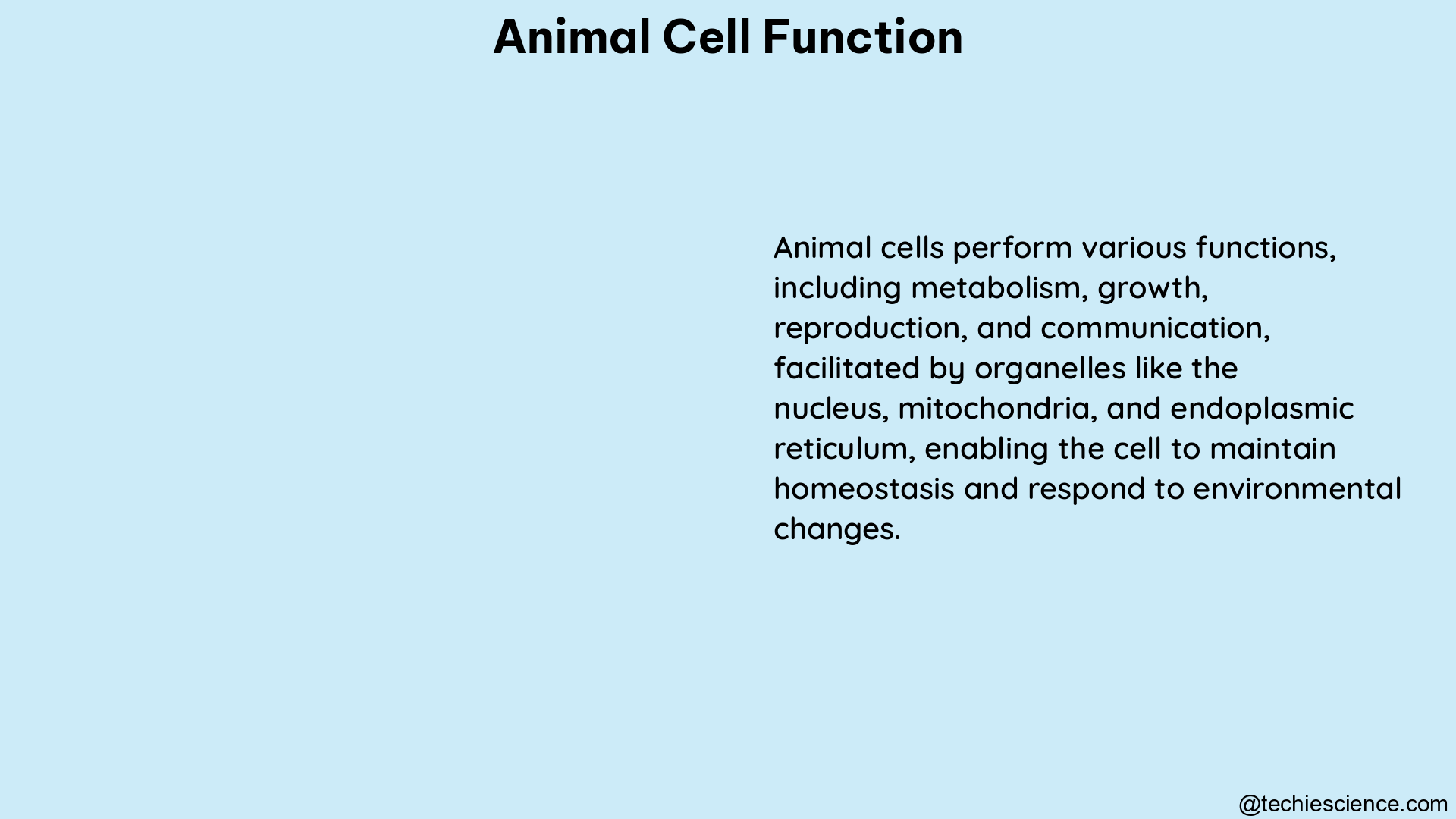Animal cells are the fundamental units of life in multicellular organisms, responsible for carrying out a wide range of essential functions. At the core of animal cell function lies the intricate interplay between cell size sensing and growth rate regulation, which are critical for maintaining cellular homeostasis and ensuring proper development and function.
Cell Size Sensing: Monitoring and Correcting Cell Size Deviations
Cell size sensing is a mechanism by which animal cells continuously monitor and adjust their size to maintain optimal cellular function. This process involves the regulation of both cell cycle length and growth rate, ensuring that cells maintain their target size throughout their lifespan.
Regulation of Cell Cycle Length
Animal cells that are smaller than their target size tend to spend longer periods in the G1 phase of the cell cycle, similar to the strategy observed in yeast cells. This extended G1 phase allows the cell to accumulate the necessary resources and reach the appropriate size before progressing through the subsequent cell cycle stages.
Transient Adjustments in Anabolic Growth Rates
In addition to cell cycle length regulation, animal cells employ a conceptually different strategy for size correction. During two distinct points in the cell cycle, the anabolic growth rates of cells are transiently adjusted. Smaller cells experience a temporary increase in their growth rate, while larger cells undergo a slight reduction in their growth rate. These periods of growth rate adjustment function to lower cell size variability within the population, promoting size uniformity.
Quantifying Cell Size Sensing
Researchers have developed methods to quantify the cell size sensing process in animal cells. By measuring the bulk protein content (total SE-A647 intensity) and the number of cells in a sample, they can calculate the average growth rate and cell cycle length of cells under different conditions. This is achieved by fitting the data points to an exponential growth model. Additionally, cell cycle length can be independently measured by monitoring the proliferation of live cells using differential phase-contrast microscopy.
Growth Rate Regulation: Maintaining Size Homeostasis

Growth rate regulation is another critical aspect of animal cell function, as it plays a crucial role in maintaining size homeostasis within the population.
Limitations of the Size Threshold Model
The traditional size threshold model, which relies solely on the regulation of cell cycle length, has limitations in its ability to correct the size of very large cells. If some cells are able to grow fast enough to double their size even within a short cell cycle, the regulation of cell cycle length alone cannot effectively constrain size variability in the population.
Correlation of Growth Rate and Cell Size
To accurately measure the relationship between growth rate and cell size, researchers have developed the -value analysis. This approach allows them to infer the correlation between these two parameters from measurements of cell size variance. Using this method, researchers have provided the first definitive proof that individual animal cells autonomously monitor their own size and adjust their growth rate accordingly.
Experimental Assays for Growth Rate Regulation
The -value analysis not only demonstrated the existence of growth rate regulation in animal cells but also provided new experimental assays for further studying this critical aspect of cell function. These assays enable researchers to quantify the precise mechanisms by which animal cells maintain size homeostasis through the regulation of their growth rates.
Conclusion
Animal cell function is a complex and multifaceted process, with cell size sensing and growth rate regulation being two of its most critical components. By understanding the intricate mechanisms underlying these processes, researchers can gain valuable insights into the fundamental principles of cellular biology and develop new strategies for addressing various health and developmental challenges.
References:
- Animal Cell Culture – an overview | ScienceDirect Topics
- Animal tissue culture principles and applications – PMC – NCBI
- Cell size sensing in animal cells coordinates anabolic growth rates | eLife
- Cell size sensing in animal cells coordinates anabolic growth rates | PMC – NCBI
- Biology Chapter 1 Intro to Science and Cells Flashcards | Quizlet

The lambdageeks.com Core SME Team is a group of experienced subject matter experts from diverse scientific and technical fields including Physics, Chemistry, Technology,Electronics & Electrical Engineering, Automotive, Mechanical Engineering. Our team collaborates to create high-quality, well-researched articles on a wide range of science and technology topics for the lambdageeks.com website.
All Our Senior SME are having more than 7 Years of experience in the respective fields . They are either Working Industry Professionals or assocaited With different Universities. Refer Our Authors Page to get to know About our Core SMEs.